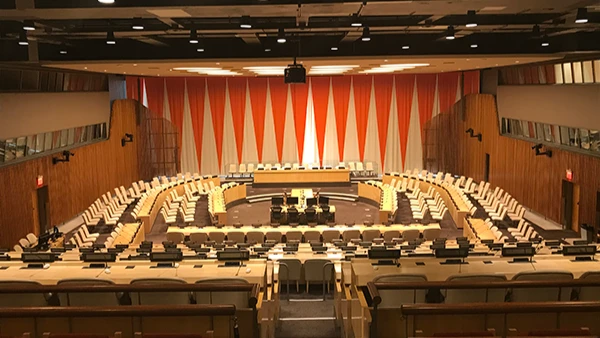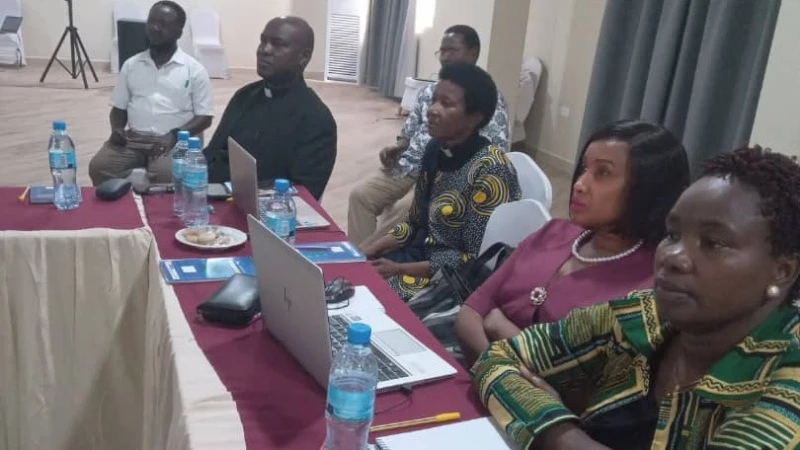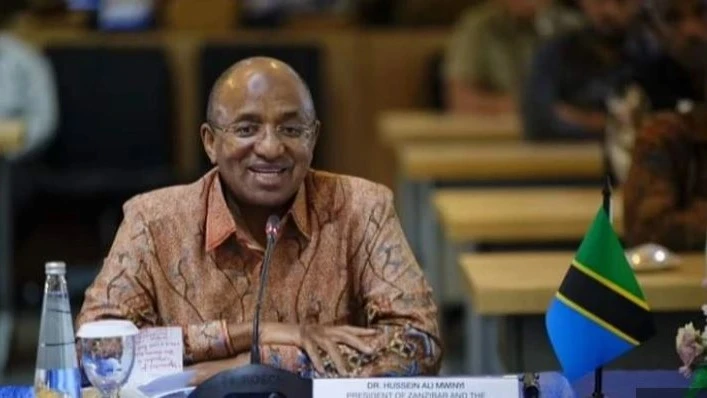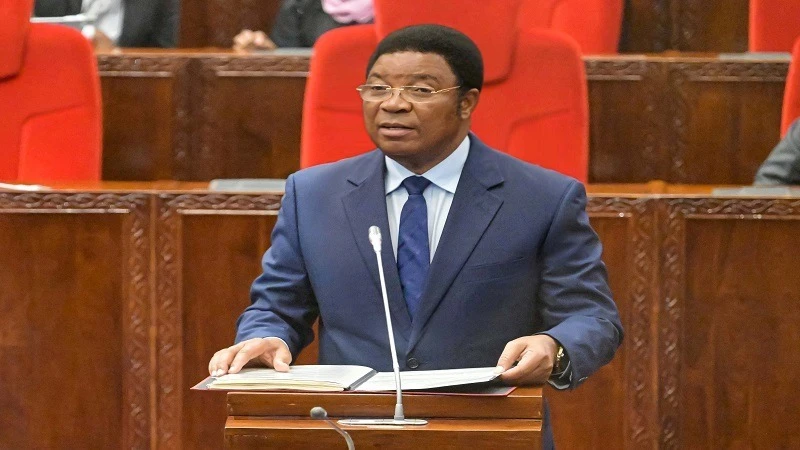New subject combinations: An education revolution seeking to embrace global success

IN a significant move poised to reshape Tanzania's education landscape, the government is rolling out 49 new subject combinations for students entering the next level of education.
These subject combinations promise to offer students a wider array of knowledge and skills, aligning with the recently implemented education policies and curricula.
This initiative marks a crucial juncture in Tanzania's educational evolution, as it seeks to address the evolving needs of students in an increasingly complex and interconnected world. By introducing a diverse range of subject combinations, the government aims to equip students with the interdisciplinary skills and competencies necessary to thrive in the 21st century.
The decision to introduce these new subject combinations has ignited a spectrum of reactions within the education community. While some stakeholders view it as a progressive step towards providing students with diversified learning opportunities, others harbor reservations regarding the pace of decision-making and the clarity surrounding implementation strategies.
At the helm of these reforms, the Tanzania Institute of Education (TIE), tasked with steering curriculum development, finds itself under scrutiny for its lack of detailed guidelines on the methods and procedures for procuring textbooks to support the rollout of the new subject combinations. This ambiguity has left educators and parents apprehensive about the feasibility of executing such a comprehensive overhaul.
Furthermore, the absence of comprehensive communication from the Commissioner for Education regarding the rationale behind these new subject combinations has raised eyebrows among education analysts. They stress the importance of transparent communication and collaborative efforts between policymakers and educators to ensure the seamless execution of education reforms.
Nonetheless, government officials, led by Mohamed Mchengera, the Minister of State in the Office of the President for Regional Administration and Local Government (PO-RA-LG), are steadfast in assuring the public of the government's readiness to implement the new subject combinations.
Mchengera underscores the extensive consultations with education stakeholders that have informed the decision-making process, coupled with allocated funding to support implementation endeavors.
According to the Secretary-General of the Tanzania Association of Managers and Owners of Non-government Schools and Colleges (Tamongsco), Benjamin Nkonya, the introduction of these new subject combinations aims to equip students with skills pertinent to the contemporary job market. Nkonya underscores the potential of expanded specialization in international languages to bolster diplomatic ties and ready students for global employment prospects.
Furthermore, Nkonya emphasizes the transformative impact of these subject combinations, highlighting their role in fostering cultural understanding and enhancing Tanzania's position in the global arena. With a focus on practical skills and global competencies, these subject combinations empower students to navigate the complexities of the modern workforce with confidence and adaptability.
Echoing similar sentiments, retired teacher Gozbert Muganyizi underscores the pivotal role of early professional preparation for students. He believes that the new subject combinations will empower students to cultivate expertise in their chosen fields, thereby positioning them for success in tertiary education and beyond.
Elias Elisante, CEO of the online learning platform Smart Darasa, lauds the introduction of 49 new subject combinations as a timely initiative to broaden students' horizons and foster creativity. He emphasizes the significance of subjects such as Physics, Mathematics, and Computer Science in priming students for careers in technology and artificial intelligence.
Despite the prevailing optimism surrounding the new subject combinations, certain education stakeholders express apprehensions regarding the feasibility of implementation, particularly amidst ongoing challenges in attaining the objectives of the new curriculum. Questions also linger regarding the incorporation of religious studies in the new subject combinations, prompting calls for clarity on instructional methodologies and curriculum integration.
Renowned writer and education activist Richard Mabala raises pertinent questions about the decision-making process, particularly concerning the introduction of sensitive subjects without robust implementation strategies. Mabala stresses the importance of involving students in decision-making processes and addressing their concerns regarding subject selection and vocational education.
In response to these concerns, there is mounting pressure for comprehensive teacher training programs to equip educators with the requisite skills to effectively deliver the new subject combinations. Additionally, stakeholders emphasize the imperative of collaboration between educational institutions and publishers to ensure the availability of high-quality textbooks aligned with the new curriculum.
The success stories of countries that have implemented new subject combinations in their education curricula, showcase how meticulous planning, transparent communication, and collaboration among stakeholders have contributed to their achievements.
One prime example is Finland, often hailed for its exemplary education system. In the early 2000s, Finland underwent a comprehensive overhaul of its curriculum, introducing interdisciplinary learning and flexible subject combinations. This reform aimed to equip students with critical thinking skills, creativity, and adaptability, essential for success in the rapidly evolving global landscape.
Through meticulous planning and extensive consultation with educators, policymakers, and the broader community, Finland successfully implemented the new curriculum. Transparent communication ensured that stakeholders understood the rationale behind the reforms and felt invested in their success.
The results speak for themselves. Finland consistently ranks among the top performers in international assessments such as the Programme for International Student Assessment (PISA). Students demonstrate not only strong academic achievement but also high levels of creativity, problem-solving ability, and resilience.
Another notable example is Singapore, renowned for its rigorous education system and emphasis on innovation. In recent years, Singapore has introduced new subject combinations that integrate STEM (Science, Technology, Engineering, and Mathematics) disciplines with humanities and the arts.
Through close collaboration between the Ministry of Education, educators, industry partners, and community stakeholders, Singapore has effectively implemented these new subject combinations. Transparent communication channels have facilitated dialogue and feedback, ensuring that the reforms meet the needs of students and align with the demands of the 21st-century workforce.
As a result, Singaporean students excel not only in STEM subjects but also in areas such as critical thinking, communication, and collaboration. The curriculum equips them with a well-rounded skill set, positioning them competitively in the global economy.
Additionally, countries like South Korea and Canada have also seen success with the introduction of new subject combinations. South Korea's focus on integrating digital literacy and entrepreneurship into its curriculum has led to a generation of innovative thinkers and tech-savvy individuals. Canada's emphasis on interdisciplinary learning and experiential education has produced graduates with diverse skill sets and a strong sense of social responsibility.
Therefore, the success of countries with newly introduced subject combinations underscores the importance of meticulous planning, transparent communication, and collaboration among stakeholders. By prioritizing the needs and aspirations of students and aligning curricular reforms with the demands of the modern world, these countries have sculpted brighter futures for generations to come. Tanzania can draw inspiration from these success stories as it charts its trajectory in education reform.
Top Headlines
© 2024 IPPMEDIA.COM. ALL RIGHTS RESERVED











![The CEO of Flightlink Limited Mr. Munawer Dhirani and DTB Tanzania CEO, Mr. Ravneet Chowdhury [center] during the unveiling ceremony of the 72-seater ATR 500 aircraft over the weekend. Other officials present at the function are Chief Operating Officer.](https://ippmedia.com/storage/post-feature-images/01J75Y6DM8PY93SGFZD4GYPXJ4.webp )













